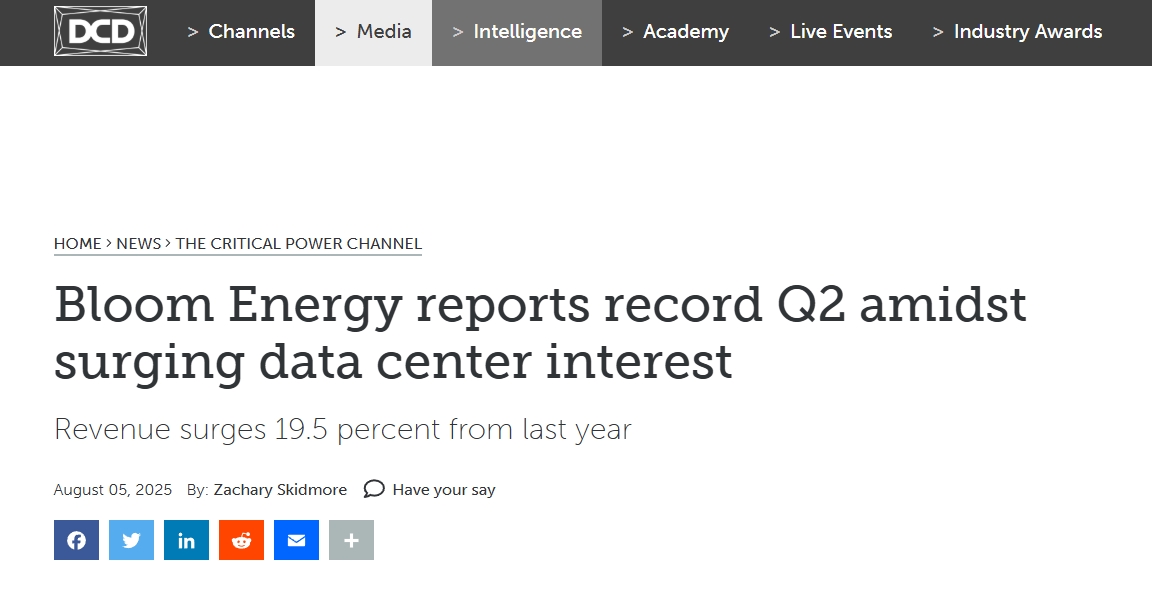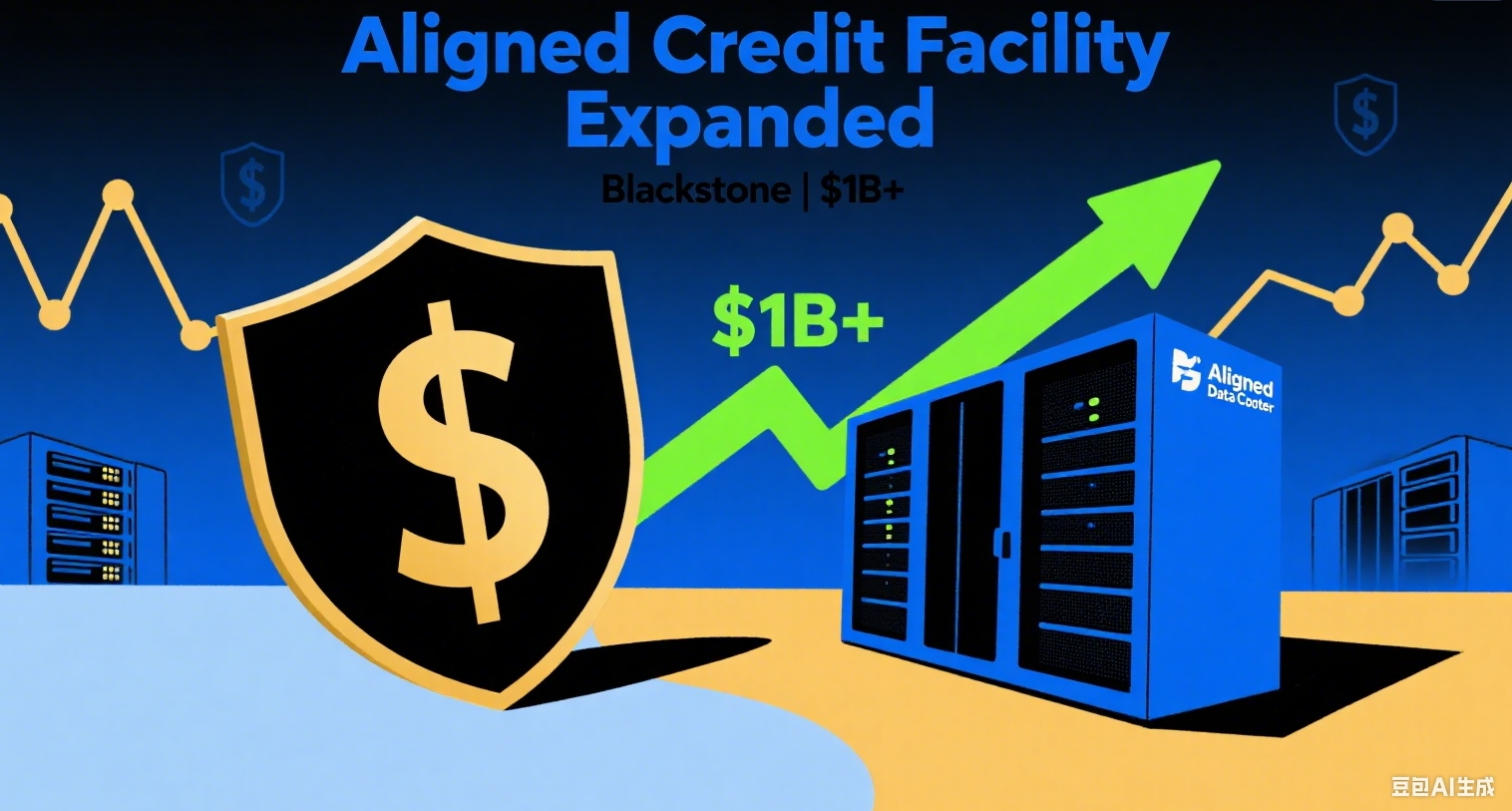Revenue surges 19.5 percent from last year.
Fuel cell developer Bloom Energy has reported a record financial quarter on the back of surging interest from the data center sector.
In its Q2 earnings report, Bloom revealed that its revenue had increased to $401.2 million, a 19.5 percent increase from the same quarter last year.
Commenting on the record quarter, KR Sridhar, founder, chairman, and CEO of Bloom Energy, said: “As onsite power becomes increasingly self-evident, given rapid AI growth, there has never been better market pull for the Bloom products. Unlike alternatives, our products are purpose-built for the digital revolution.”
The company made a landmark announcement last month, signing its first direct hyperscaler deal with Oracle to power an entire data center via its solid oxide fuel cell (SOFC) solution. The deal will see Bloom deploy fuel cells across “select data centers,” with deployment expected within three months of the deal's announcement.
Due to the success, Bloom is intending to aggressively expand to meet the perceived surge in demand for off-grid power solutions. According to the company, it is seeking to double manufacturing capacity from 1GW to 2GW annually by the end of 2026, which would require an investment of around $100m.
The company sees itself as a direct competitor to natural gas turbine providers, which have also seen significant interest from the data center sector. Bloom claimed that, at present, SOFCs have a capex on parity with natural gas turbines, but with 15-20 percent lower fuel consumption, in addition to easier permitting due to their reduced emission profile.
The ability to power data centers and other large users through onsite generation in a short time frame is one of Bloom's biggest selling points, Aman Joshi, CCO at Bloom, told DCD.
“We’re seeing a massive acceleration in demand for AI data centers, and the power these facilities need simply can’t wait for traditional utility buildouts. The real bottleneck isn’t always generation — it’s the transmission and distribution infrastructure. With Bloom, we bypass all that. Our modular systems don’t need grid interconnects and can be up and running in a matter of weeks,” he said.
Bloom’s SOFCs work by converting fuel into electricity via an electrochemical reaction, rather than combustion, which Bloom claims results in much higher efficiency and lower emissions. The cells are fuel agnostic. “Our platform works with natural gas, biogas, and hydrogen,” said Joshi.
Most, if not all, are currently being powered through natural gas due to the cost of hydrogen and the lack of a reliable supply chain. This fact scuppered a deal with Amazon last year, with the hyperscaler canceling a contract to power three of its data centers via Bloom fuel cells in Oregon. Amazon cited the fact that if the company switched over to using fuel cells, its carbon footprint would actually increase.
Despite this setback, Bloom has signed several deals across the data center sector during the last two years.
In February, the company extended a fuel cell supply agreement with Equinix for deployments across 19 data centers, with a capacity exceeding 100MW. The partnership was initially signed in 2015 with a 1MW pilot program at a single Equinix IBX data center in Silicon Valley.
In November, the company signed a supply agreement with major US utility American Electric Power for up to 1GW of SOFCs to power AI data centers off-grid.
Before this, last July, GPU cloud provider CoreWeave announced it was set to deploy Bloom fuel cells at a data center owned by Chirisa Technology Parks in Volo, Illinois. The fuel cells are set to be commissioned in Q3 2025.








